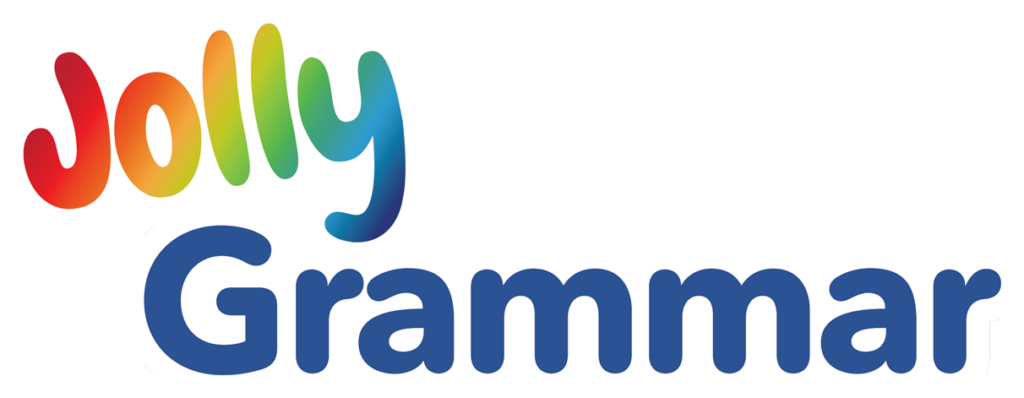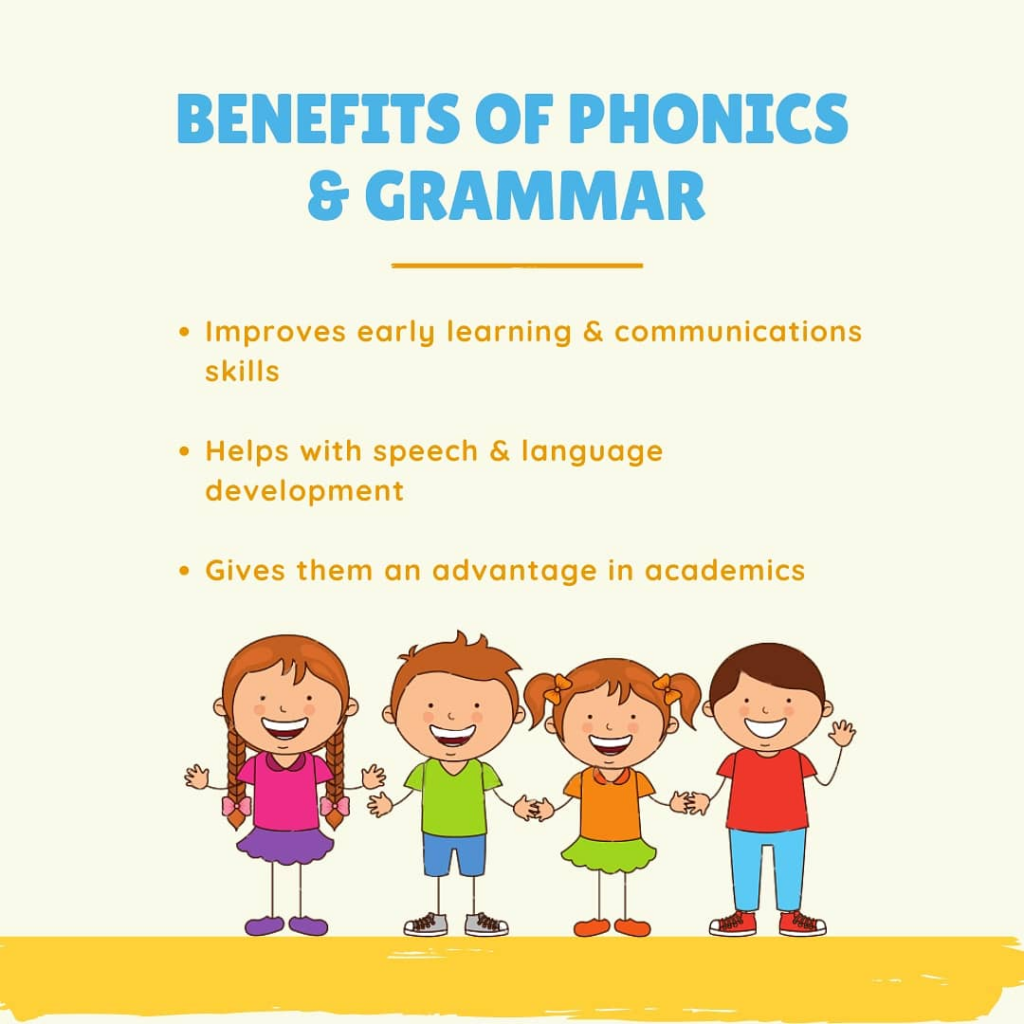
Introduction:
At Levelup, our commitment to educational excellence drives us to explore innovative approaches that elevate learning outcomes. Today, we delve into the integration of Jolly Grammar into the curriculum, a pedagogical methodology renowned for its efficacy in teaching grammar to young learners. Jolly Grammar, an integral part of the Jolly Phonics program, stands as a beacon of comprehensive language instruction. In this expansive discussion, we explore the best practices and multifaceted benefits of incorporating Jolly Grammar into educational frameworks, particularly focusing on its transformative role in shaping students’ linguistic competencies.
Understanding Jolly Grammar:
Jolly Grammar stands as a testament to the efficacy of the Jolly Phonics program, a renowned multisensory approach to literacy education. Developed by Sue Lloyd and Sara Wernham, Jolly Grammar transcends conventional grammar instruction by integrating engaging activities, rhythmic songs, and physical actions. Its systematic and child-friendly approach makes it accessible to learners of diverse styles, ensuring that every student finds success in mastering grammar fundamentals.

Best Practices for Integrating Jolly Grammar:
1. Sequential Approach: The foundation of effective grammar instruction lies in a sequential approach. Begin by introducing fundamental concepts such as nouns, verbs, adjectives, and adverbs. Gradually scaffold learning to encompass more complex grammatical structures, ensuring a step-by-step progression that aligns with students’ cognitive development.
2. Multisensory Learning: Engage students through multisensory experiences that stimulate various senses. Incorporate kinesthetic elements such as gestures and movements to reinforce learning. Visual aids, auditory cues, and tactile materials further enrich the learning experience, catering to diverse learning styles and enhancing retention.
3. Interactive Activities: Infuse grammar lessons with interactive activities that foster active participation and meaningful engagement. Games, puzzles, and role-playing exercises not only make learning enjoyable but also facilitate deeper understanding and application of grammar concepts in real-world contexts.
4. Integration with Reading and Writing: Seamless integration of grammar instruction with reading and writing activities enhances language acquisition and application. Encourage students to analyze grammatical structures in texts, apply learned concepts in their writing, and articulate their ideas with clarity and coherence.
5. Differentiated Instruction: Recognize the unique needs and abilities of each student through differentiated instruction. Provide additional support to struggling learners while challenging advanced students with extension activities. Tailoring instruction to individual learning profiles ensures that all students are appropriately challenged and supported on their learning journey.
6. Regular Assessment: Assessment is integral to monitoring student progress and informing instructional decisions. Implement a variety of formative and summative assessment strategies to gauge understanding, identify areas for improvement, and provide timely feedback. Diagnostic assessments help pinpoint specific areas of strength and weakness, guiding targeted intervention and support.
7. Professional Development: Investing in continuous professional development for educators is paramount to ensuring effective implementation of Jolly Grammar. Equip teachers with comprehensive training in Jolly Grammar methodology, instructional strategies, and classroom management techniques. Ongoing support and collaboration opportunities further enhance teacher efficacy and student success.

Benefits of Integrating Jolly Grammar:
1. Strong Foundation in Grammar: Jolly Grammar lays a solid foundation in grammar fundamentals, equipping students with the knowledge and skills necessary for language proficiency. By mastering grammar rules and structures, students develop a deeper understanding of language mechanics and enhance their communication abilities.
2. Improved Literacy Skills: The integration of Jolly Grammar into the curriculum enhances students’ literacy skills across all domains. From reading comprehension and writing fluency to oral communication and vocabulary acquisition, students demonstrate heightened proficiency and confidence in their language abilities.
3. Enhanced Critical Thinking: Engaging with grammar concepts fosters critical thinking skills as students analyze language patterns, discern meaning, and make connections. Through thoughtful exploration of grammatical structures, students develop analytical reasoning, problem-solving abilities, and metacognitive awareness.
4. Confidence and Motivation: Jolly Grammar cultivates a positive learning environment where students feel empowered to explore and express themselves linguistically. Through interactive and meaningful learning experiences, students build confidence in their language abilities and develop a lifelong love for learning.
5. Transferable Skills: The skills acquired through Jolly Grammar transcend the confines of the language classroom, extending to various academic disciplines and real-world contexts. Students learn to communicate effectively, think critically, and collaborate with others, preparing them for success in academic pursuits and future endeavors.
6. Preparation for Standardized Tests: Mastery of grammar concepts through Jolly Grammar provides students with a competitive advantage in standardized tests and examinations. By equipping students with the necessary grammar skills, educators ensure that students are well-prepared to excel in language-related assessments.
7. Cultural and Global Awareness: Through exposure to diverse linguistic structures and cultural contexts, Jolly Grammar promotes cultural competency and global awareness. Students develop an appreciation for language diversity, fostering empathy, respect, and understanding for individuals from diverse backgrounds.
8. Parental Involvement: Engage parents as partners in their child’s language development journey. Provide resources, workshops, and newsletters to educate parents about the importance of grammar instruction and strategies to support their child’s learning at home. Collaborative efforts between educators and parents create a cohesive learning environment that reinforces grammar concepts both in and out of the classroom.
9. Cross-Curricular Connections: Explore opportunities to integrate Jolly Grammar across various subject areas, creating meaningful connections and reinforcing learning. For example, incorporate grammar activities into science experiments, math problem-solving tasks, or social studies projects. By contextualizing grammar instruction within different disciplines, students gain a deeper understanding of how language functions in diverse contexts.
10. Technology Integration: Harness the power of technology to enhance grammar instruction and engagement. Utilize interactive whiteboards, educational apps, and online platforms to deliver dynamic grammar lessons, facilitate collaborative learning, and provide personalized feedback. Virtual learning environments offer flexibility and accessibility, catering to diverse learning needs and preferences.
11. Culturally Relevant Content: Infuse grammar instruction with culturally relevant content that reflects students’ lived experiences, identities, and backgrounds. Incorporate literature, poetry, and multimedia resources that showcase diverse voices and perspectives. By honoring students’ cultural heritage and linguistic diversity, educators foster inclusivity, equity, and cultural pride in the classroom.
12. Socio-Emotional Learning: Integrate socio-emotional learning (SEL) into grammar instruction to nurture students’ social and emotional well-being. Create a supportive classroom environment where students feel valued, respected, and empowered to take risks in their learning. Incorporate activities that promote empathy, collaboration, and self-expression, fostering positive relationships and emotional resilience.
13. Project-Based Learning: Embrace project-based learning (PBL) as a vehicle for applying grammar skills in authentic, real-world contexts. Design projects that require students to research, collaborate, and communicate effectively while applying grammar concepts in meaningful ways. PBL encourages creativity, critical thinking, and problem-solving skills, preparing students for success in the 21st century.
14. Professional Learning Communities: Foster professional learning communities (PLCs) where educators can collaborate, share best practices, and reflect on their teaching experiences. Provide opportunities for peer observation, lesson study, and collaborative planning to enhance instructional practices and student learning outcomes. By fostering a culture of continuous improvement and collaboration, educators can collectively support each other in implementing effective grammar instruction.

Conclusion:
Levelup remains steadfast in our commitment to educational excellence and innovation. By embracing a holistic approach to grammar instruction and leveraging the transformative power of Jolly Grammar, educators can empower students with essential language skills and prepare them for success in an ever-changing world. As we continue to navigate the evolving landscape of education, let us remain dedicated to providing students with the tools, resources, and support they need to thrive academically, socially, and emotionally.
Remember, if you’re seeking the Best Jolly Phonics Teacher training Institute in Mumbai Borivali to enhance your teaching skills and implement innovative grammar instruction strategies, Levelup is here to support your professional growth and educational endeavors. Together, let us embark on a journey of educational excellence and student success.


